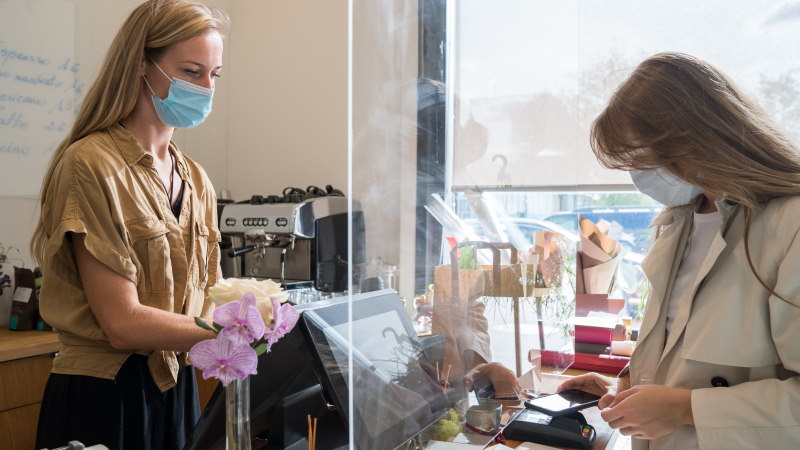The opportunity for contactless in the UK

Contactless payments has been one of the most defining trends in how UK consumers shop over the past few years. Even before the pandemic, data from UK finance showed that millions more of us were tapping to pay for our everyday purchases. That shift has simply accelerated. As Covid-19 shaped how we all lived our daily lives, consumers increasingly depended on contactless payments for a touch-free and seamless shopping experience.
This shift in consumer preference for contactless has led to the decision by the UK Government and the FCA to raise the contactless limit from £45 to £100. This national roll-out will happen from 15 October 2021. At Visa, we believe this is good news for shoppers and for businesses.
1. British consumers can shop in the way they want
Consumers increasingly prefer to tap to pay when shopping, eating out or travelling on public transport. Recent Visa data shows that eight in ten in-person payments are contactless1. Our Back to Business study also revealed that across the world nearly two-thirds (65%) of consumers would prefer to use contactless payments as much as, or even more than, they are currently. With the new contactless limit of £100, almost all card transactions, including typical purchases like a weekly grocery shop, to avoid the need for Chip & PIN2. This gives people the choice to pay in the way that is right for them.
2. Contactless is a secure way to pay
Visa rigorously monitors payments fraud across the world and contactless remains one of the most secure ways to pay, with one of the lowest fraud rates of any type of payment. Despite the contactless limit rising by 50% last year, there has been no rise in fraud rates3 with the European contactless fraud rate remaining below 0.01%.4 Furthermore, other countries, such as Australia, Singapore and Canada have successfully increased limits to over £100 without seeing an increase in fraud rates.5
Contactless fraud can only be attempted physically using a lost or stolen card. Regardless of the contactless limit, all transactions are subject to sophisticated real-time analysis when they are approved, and banks can block them or request a PIN to authorise the transaction in case of suspicious activity.
Many of the things people fear, such as fraudsters using mobile payment terminals to “skim” the details from your card, are in reality incredibly unlikely. And if you do suspect you might be a victim of fraud, then Visa’s Zero Liability Policy provides a guarantee that you won't be held responsible for any unauthorised payments made with your card or card details.
3. The higher limit will help support the economic recovery
Contactless payments are popular and secure. The new £100 limit will help retailers, especially many small stores, get back on their feet by increasing sales and in turn contribute to our economic recovery.
At Visa, our mission is to empower people to pay for what they want, how they want. In providing a network that delivers on that, we enable better experiences for shoppers, better business for retailers, which in turn benefits our wider economy. In November 2020, 67% of Visa cardholders surveyed told us that they wanted the contactless limit to be increased beyond £45.6 Visa has been supportive of the move and has been working closely with clients and industry partners to help make that ask a reality.
Last updated: 1 September 2021
1 VisaNet Data (December 2020)
2 Statista (2020)
3 VisaNet Data (November 2020)
4 VisaNet Data (December 2020)
5 VisaNet Data (December 2020)
6 Ipsos Mori Omnibus Survey, 1,000 UK Adults (November 2020)